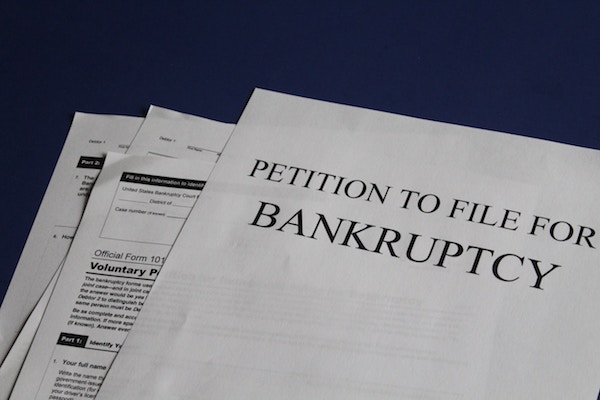Lesson from the Death of Sears, Roebuck and Co.
Diversification is not asset allocation
In 1886, Richard Sears bought a shipment of gold watches that had been rejected by a local jeweler, sold them at a profit, ordered more and then founded the R.W. Sears Watch Company in Minneapolis. The next year, he partnered with Alvah Roebuck, moved to Chicago and in 1893, Sears, Roebuck and Co. was born.
Sears went public in 1906 in the first IPO for an American retail company and the first IPO handled by Goldman Sachs. Under the stock symbol “S,” Sears was a member of the venerable Dow Jones Industrial Average from 1924 to 1999.
In the 1930s, Sears created Allstate Insurance Company and began placing Allstate representatives in its stores in 1934. Over the years, Sears established a number of major brands, including Kenmore, Craftsman, DieHard and Toughskins. Throughout most of the 20th century, Sears was a true conglomerate, owning Dean Witter Reynolds and Coldwell Banker and launching the Discover Card in 1985.
Socks and Stocks
In the early 1980s, Sears bought Dean Witter Reynolds, and under Sears it grew to become the third-largest brokerage firm in the U.S. with over 9,000 account executives serving over 3.2 million clients with total assets under management over $90 billion.
With this acquisition came a new “socks and stocks” strategy, which was an effort to expand their financial services offerings beyond its existing insurance business.
What Killed Sears
Sears filled for bankruptcy on Monday, October 15th. So, what happened to cause this 125-year-old company to fall so far?
Typing in the phrase “what killed Sears” in a Google search will turn up over 12 million hits and lots of explanations for the demise of this one-time giant. At the top of the list is usually Amazon, but one will also find articles with inflammatory titles like:
- Retail Hubris;
- Walmart, Home Depot and Target Killed Sears;
- Blame the Sears Retirees;
- The Most Hated CEO in America; and
- Ayn Rand Killed Sears
The reality is that there were lots of reasons for the demise of Sears. But instead of trying to answer that question, there is one very important lesson that investors would be well served by remembering:
Diversification is Not Asset Allocation
The question of how we array our investments is vital to our future financial well-being. Key to this is knowing the difference between asset allocation and diversification.
Some think that asset allocation and diversification are the same. They are not. An investor may have excellent diversification but poor asset allocation and vice versa. To keep unnecessary risks to a minimum, we need both.
Let’s start with asset allocation. This refers to the actual act of investing in different categories of investments, called asset classes. That is, we pick which assets we want to have in our portfolio. Generally, investors choose from stocks (equities), bonds (fixed income), cash, commodities and real estate.
Diversification, on the other hand, is the process of balancing these classes and within these classes so they offset one another amid ever-changing market conditions.
A Simple Example
Suppose an investor buys one single stock, one bond, holds one dollar, one ounce of gold and owns a home – this is an example of a decent allocation across most of the asset classes. However, the diversification is terrible.
Assume we have a total of $100 ($20 each) in the five asset classes. If the company issuing the stock goes bankrupt, we immediately lose 20% of the portfolio and now hold a total of $80. This, of course, assumes that the rest of the market does not change.
The following year, the company that issued the bond defaults on its debt and cannot repay the bondholders. Now, our portfolio is worth only $60, a 40% loss in two years. The next year gold doubles, as does real estate, which brings the portfolio back to a total of $100 ($40 in gold, $40 in real estate and $20 in cash). We are back to where we started financially but with fewer asset class categories.
Then, stocks and bonds soar. Since we lost our stock and bond exposure when they tanked, we miss a huge opportunity. Not to mention that cash actually lost money (purchasing power) due to inflation.
As an alternative, if we still choose the same asset classes, but diversify within those asset classes, we have more protection against market volatility. For example, we don’t choose just one stock, but several hundred through mutual funds divided among small-capitalization, mid-cap, large-cap and international mutual funds. Similarly, instead of one single bond, we consider holding short-term, intermediate and long-term fixed-income mutual funds. The same is true for commodities (not only gold, but natural resources, silver, etc.) and real estate – we consider mutual funds.
The Final Proof Point
Richard Sears was born into a relatively prosperous family in 1863. His father was a blacksmith and wagon-maker, but he lost all of his money – about $50,000 – in a failed stock-farm venture.
Don’t be like Sears.
Disclosure: There is no assurance that a diversified portfolio will produce better returns than an undiversified portfolio, nor does diversification assure against market loss.






